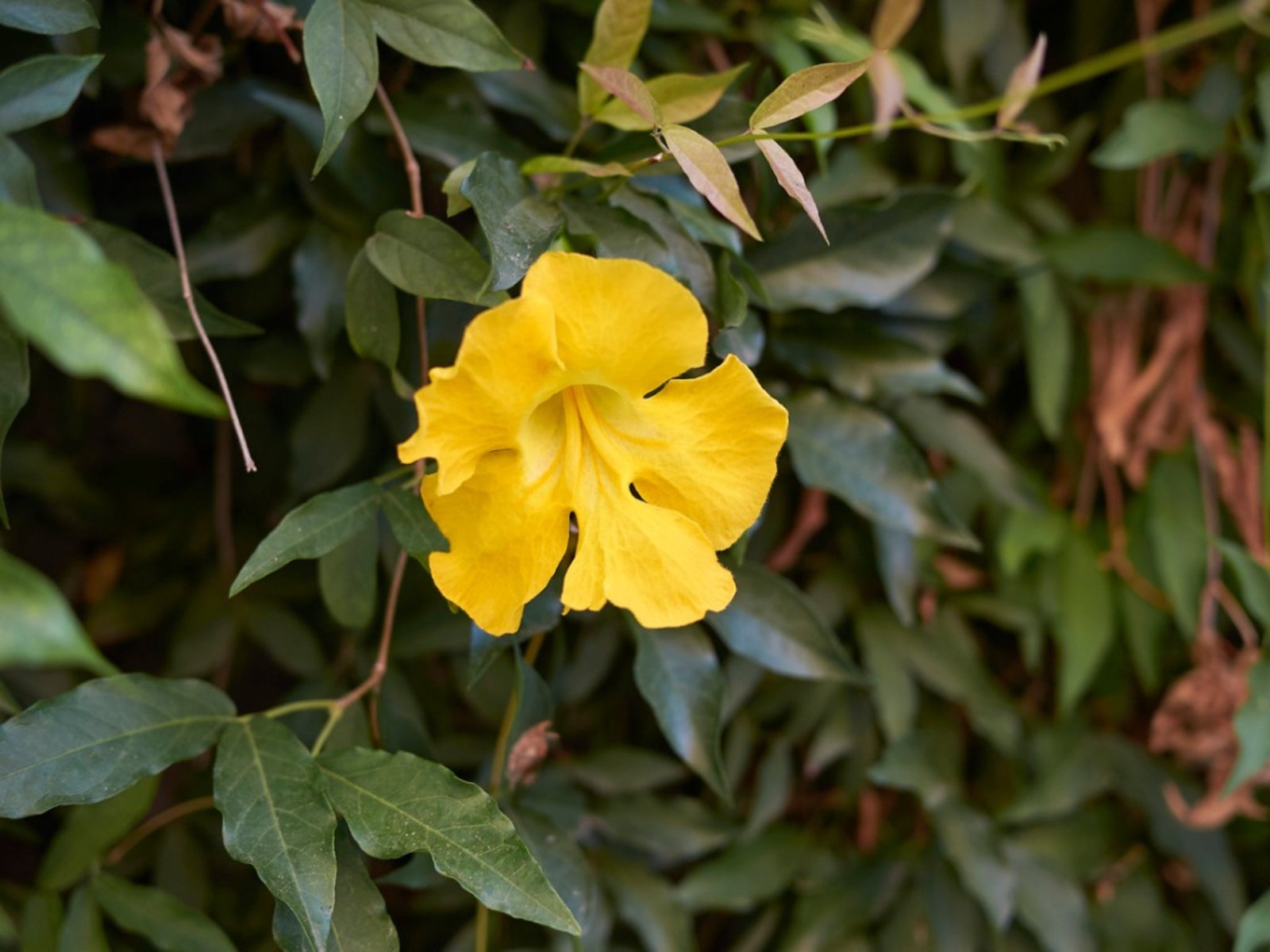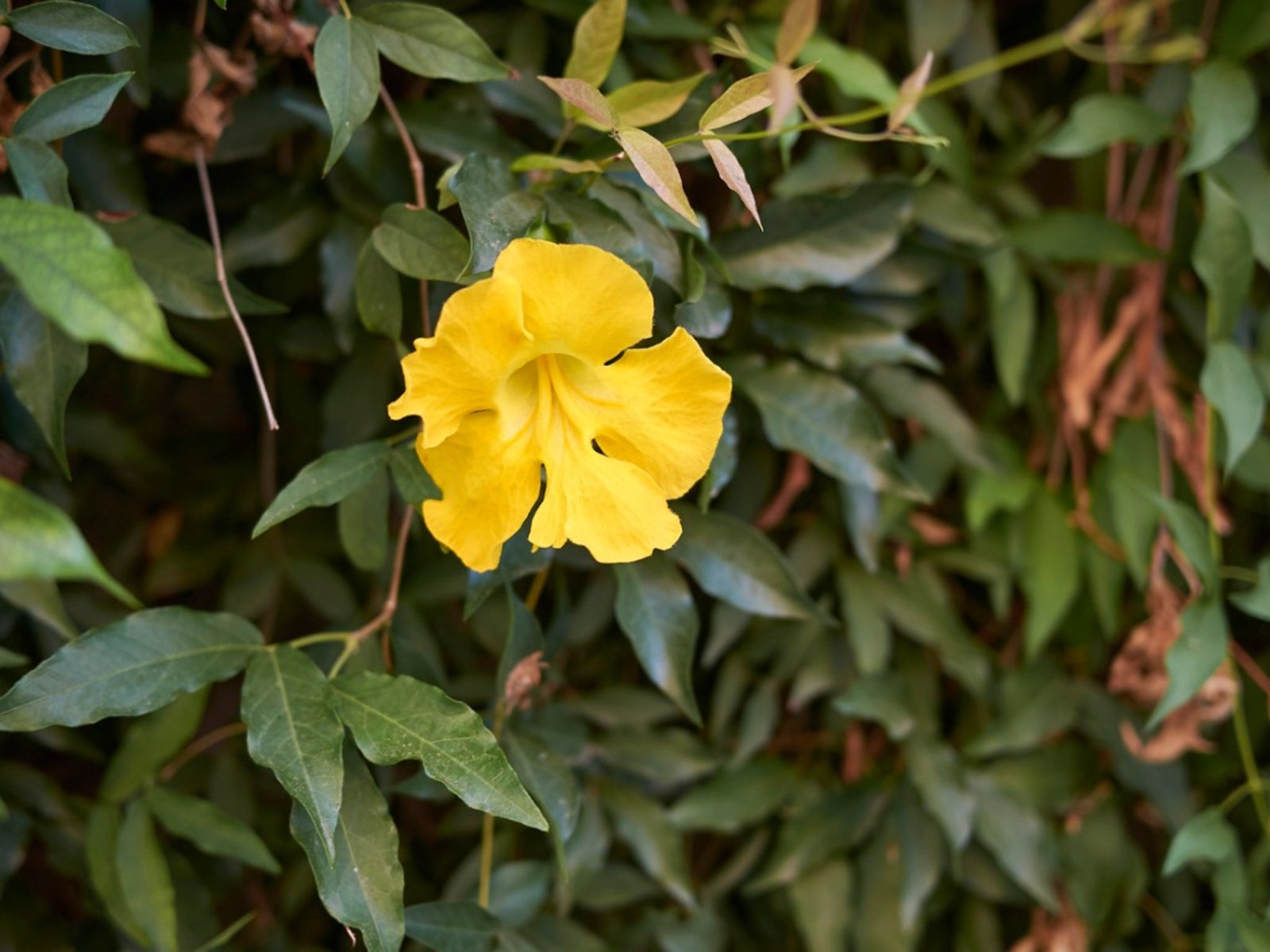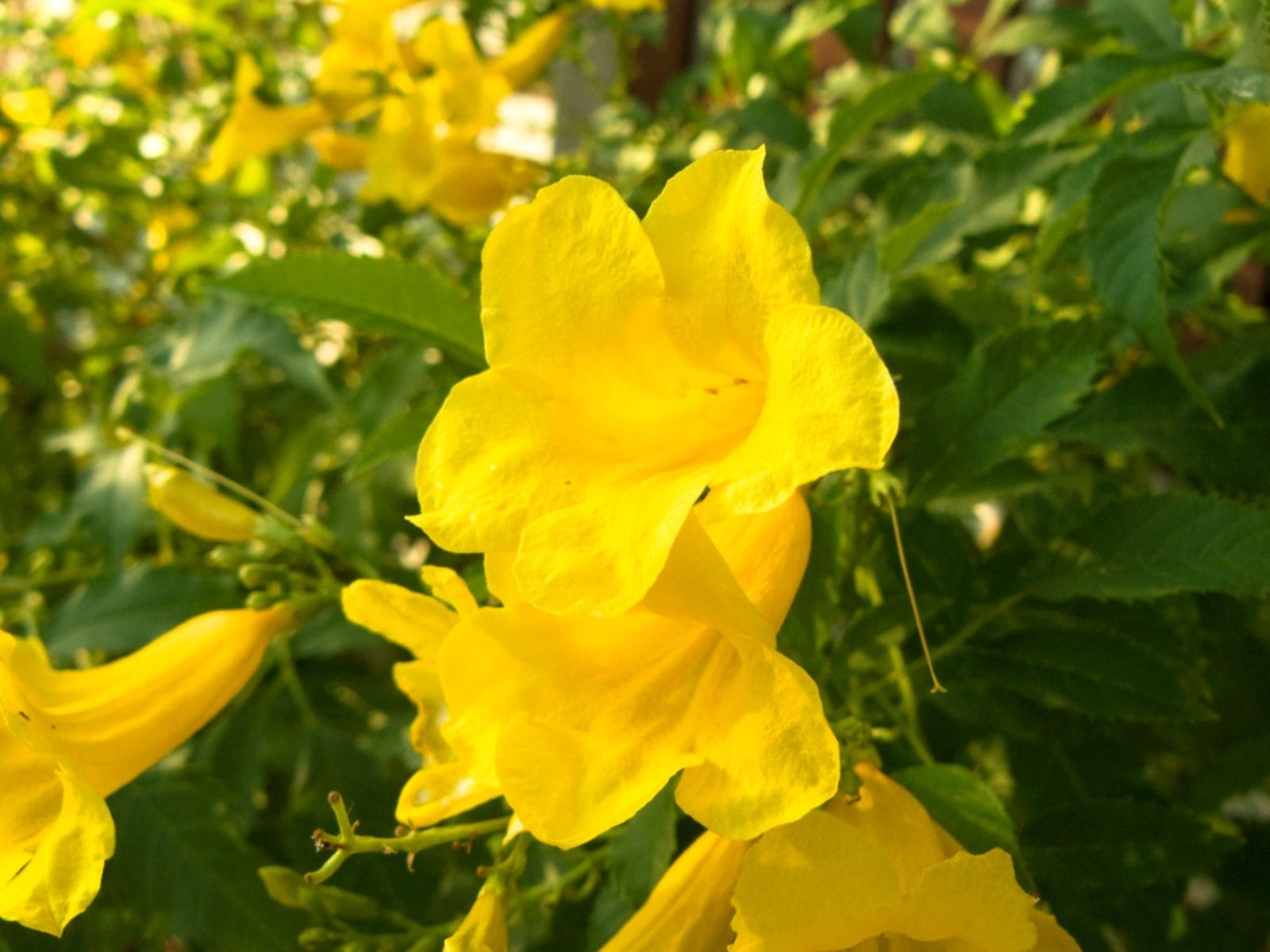Controlling Cat's Claw: How To Get Rid Of A Cat's Claw Vine Plant

Cat's claw (Macfadyena unguis-cati) is an invasive vine with yellow flowers. This vine has three claw-like prongs on it, thus the name. It uses theses prongs to cling to whatever it climbs, and to travel on the ground. While some people that practice alternative medicine use the vine for medicinal purposes, most think of it only as a pest.
Controlling Cat's Claw Vines
The bright yellow, tube-like flowers are eye-catching and make the vine very distinguishable from other plants. This plant is very aggressive, partly because it has multiple ways of growing. When spreading on the ground, new plants can spring up from tubs under the earth. When climbing, it produces seed pods with winged seeds that fly to a new location to grow. Controlling cat's claw is a common concern of many gardeners. Because cat's claw vines are so aggressive, they can quickly take over plants and make it difficult for them to grow. This vine favors growing along the ground and in trees. If left alone, it can grow more than 50 feet (15 m.). Climbing in the tree ruins the tree's health and, in some cases, can even kill it. When the vine spreads on the ground, it smothers grass, small bushes, and other low-growing plants, usually killing them as well.
How to Get Rid of a Cat's Claw Vine Plant
Completely getting rid of a cat's claw vine is very difficult; however, it can be done with patience. Weed killers and other forms chemical killers do not seem to have great results. The best way to get rid of it is pulling it down from trees, and digging up the underground tubers. This is a difficult task, but it is much easier when you catch the vine while it is young. Climbing cat's claw control requires that you check back regularly to make sure all the tubers are gone and no new vines are sprouting.
How is Cat's Claw Used?
Cat's claw may be bad for your garden, but it is great for your health. If you're tired of fighting the vines, take advantage of its many medicinal values. Indians, medicine people, and shamans have used cat's claw for medicinal reasons for years. To take it as medicine, the inner bark and roots are stewed in water and then the liquid is ingested. Note: Never begin an herbal treatment program without medical consent. Here are a few things it can assist in healing:
- Arthritis
- Fibromyalgia
- Lupus
- Respiratory infections
- Allergies
- Shingles
- Prostate problems
- Asthma
- Viral infections
- Colitis
- Acne
- Depression
- Diabetes
- Menstrual problems
- Parasites
- Herpes
- Hypoglycemia
- Multiple sclerosis
- AIDS
Gardening tips, videos, info and more delivered right to your inbox!
Sign up for the Gardening Know How newsletter today and receive a free copy of our e-book "How to Grow Delicious Tomatoes".
-
 Looking For Plants To Give You The Soft And Fuzzies? Try These 5 Fuzzy Leaf Plant Options
Looking For Plants To Give You The Soft And Fuzzies? Try These 5 Fuzzy Leaf Plant OptionsLovers of texture, drama, silver foliage and tactile plants will adore these special sensory garden additions. These fuzzy leaf plant options will leave you all aglow
By Susan Albert
-
 Get Ready For A Summer Of Hummers! Grow These Full Sun Hummingbird Plants and Flowers
Get Ready For A Summer Of Hummers! Grow These Full Sun Hummingbird Plants and FlowersIf you’re lucky enough to enjoy a sunny backyard, make sure you are maxing out on your pollinator opportunities and grow these full sun hummingbird plants and flowers
By Tonya Barnett
-
 How To Trim Cat’s Claw Plants: Cutting Back A Cat’s Claw Vine In The Garden
How To Trim Cat’s Claw Plants: Cutting Back A Cat’s Claw Vine In The GardenCat's claw vines, fast growing and drought tolerant, fill your garden with drama and color. But don't let it go wherever it wants to. Cutting back cat's claw is an important and easy way to keep the vine under control. Learn more in this article.
By Teo Spengler
-
 Cat’s Claw Plant Care: How To Grow Cat’s Claw Vines
Cat’s Claw Plant Care: How To Grow Cat’s Claw VinesCat's claw is a prolific, fast-growing vine that produces tons of bright, vibrant flowers. It spreads quickly and is considered invasive in some places, but if you treat it right, it can have a big payoff. Learn more about how to grow cat's claw vines here.
By Liz Baessler